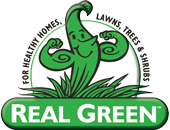| |
Our free 16 point analysis
includes the following: |
|
1 |
Soil
PH:
If the soil PH isn't right, nitrogen and/or iron isn't available to the
plant, because it is bound to the soil.
The first step to proper lawn care is a soil analysis, which is always
free to our clientele. If you don't know where you
are, how do you know where you are going? |
|
2 |
Fertility:
This is the sum total of nutrients in your soil. Why add nutrients that may not be needed?
Equate this to adding oil to your car without checking the level first. |
|
3 |
Grass Types:
Most lawns are not made up of one single grass type. It's best to know
which types are in your lawn to provide the best care. |
|
4 |
Turf
Density:
It's important to keep your lawn thick as dense, healthy turf
discourages weeds and crabgrass. |
|
5 |
Color:
The color of your grass says a lot about its health. A light colored
lawn may mean it's lacking important nutrients. Different varieties of
turf have different color optimums. |
|
6 |
Thatch:
Thatch is a layer of leaves, stems and roots just above
the soil. Too much will reduce a lawn's response to fertilizers and
affects watering practices. Disease and insects are common
where thatch is excessive. |
|
7 |
Lawn
Diseases:
There are many types of diseases that can affect the appearance and
health of your lawn. Because diseases are difficult to predict, we
can't guarantee your lawn won't be affected by disease. If disease
becomes a problem, our lawn care specialists can assist to determine
what steps can be taken to help your lawn recover. |
|
8 |
Soil Type:
Knowing the type and condition of your soil will help determine your
lawn's needs. If soil is compacted, core aeration is recommended. |
|
9 |
Broadleaf Weed:
Some weeds can be very difficult to control. Certain weed spread very
rapidly and can quickly choke your grass. It's best to have a
professional prescribe the proper weed controls for best results. |
|
10 |
Mowing:
Few homeowners realize the importance of mowing correctly. Cutting
certain grass types too low or infrequently can cause the lawn to turn
brown and increases its susceptibility to weed, disease, and crabgrass. |
|
11 |
Insects:
Thousands of insects live in your grass. Some are helpful, while others
threaten your lawn. It's important to know if
damaging insects are present in your area so they can be prevented or
controlled. |
|
12 |
Shade:
Being aware of your lawn's exposure to sunlight and shade helps
determine the type of grass that grows best in your lawn. |
|
13 |
Watering:
The amount of water your lawn receives is critical to its health.
Improper watering is usually the cause of pale, sparse turf and many
diseases and weed problems. |
|
14 |
Problem Grasses:
Certain grasses are classified as weeds because they disrupt the
appearance of your lawn. Annual grassy weeds are reduced with service visits, while most perennial grassy weed are difficult to
control. |
|
15 |
Potential:
Some lawns, no matter how much work is put into them, will never look as
lush and healthy as others. Be aware of those who over promise the
guarantee of a perfect lawn. You may be disappointed. |
|
16 |
Present Conditions:
Great looking lawns require continual care. We can help maintain
your lawn at its best with our full service, annual lawn care program. |
| |
